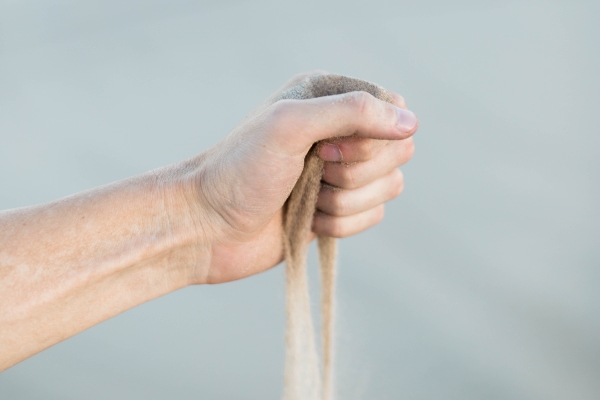
A variety of products could soon be marked using a new sand and chemical mix that is claimed to be “the world’s most secure marking system for combatting pirated goods”.
Developed by Denmark’s University of Copenhagen, the system essentially applies a random pattern onto the product, which cannot be duplicated.
The markings, which could be applied to pharmaceuticals, foodstuffs, passports, electronics, designer merchandise and artwork, could hit the market within a year, said the researchers, who have published their findings in the scientific journal Science Advances.
“The system is based on randomness, which makes it unable to be hacked or tampered with,” said associate professor Thomas Just Sorensen, head of research at the University of Copenhagen’s department of chemistry. “As soon as a customer asks that an authorised dealer checks up on a piece of merchandise that was meant to be marked using the system, an expensive wrist watch for example, the dealer can access a manufacturer database to check its authenticity.”
The marking system is based on sand mixed with three rare earth metallic elements. Firstly, a large bucket of sand is divided into three smaller tubs, with one of three different elements – europium, terbium and dysprosium – added to each tub. The elements, which light up when exposed to a specific wavelength of light, get absorbed into the surface of each grain of sand. The three tubs are then mixed together.
The random product markings are made when a piece of tape pulls thousands of coloured grains of sand out of the bucket, with the resulting pattern, measuring only a few millimetres, attached to the product by impregnating it into leather, embedding it into glass or milling it into metal.
Because the grains of sand are so small, they cannot be removed individually and rearranged into another puzzle, the researchers said.
Once attached, the marking is photographed at individual wavelengths, each of which gets the europium, terbium and dysprosium to light up. The three pictures are then combined into a single image, which is stored in a database. Products can be authenticated by scanning the product’s fingerprint and comparing it with the database.
The probability of two products having the same fingerprints was “minuscule”, Sorensen said. “It can only be described as non-existent. It corresponds to a one out of an enormous number composed of a 6 followed by 104 zeros.”
The system is not only unclonable, but the researchers said counterfeiting could be prevented if products are tagged. “We have developed an authentication system that comprises a hardware reader, image analysis, and authentication software and physical keys that we demonstrate as an anticounterfeiting system,” the researchers wrote in Science Advances.
“Using physical unclonable functions (PUFs) in an anticounterfeiting system will address the billion-dollar economic losses imposed by counterfeiting and can potentially save lives if used to guarantee the authenticity of medicine,” the researchers added.
The University of Copenhagen has taken out a patent on the system – which is described as an optical authentication system – and it is expected to be on the market in roughly a year after the researchers fine-tune scanning solutions.
The researchers estimate that the cost of marking products will be modest, probably not much more than one Danish krone. Additional expenses from the data systems have yet to be fully estimated.
Photo by Evan Kirby on Unsplash
©
SecuringIndustry.com





